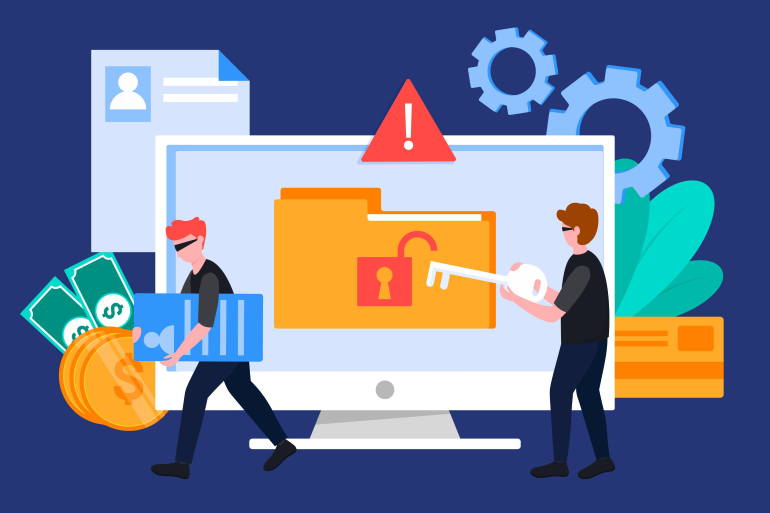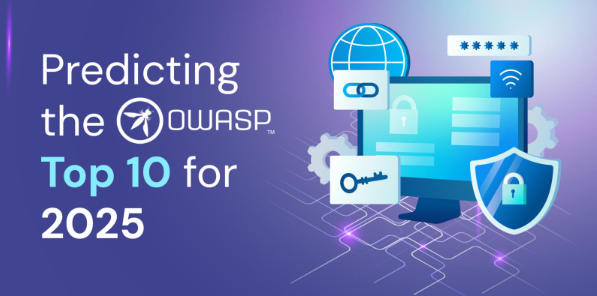
Today’s world is a global village, with the internet connecting people from all corners of the globe. In this digital age, the internet serves as the backbone of countless businesses, organizations, and personal activities. And efficient web applications have played a big part in making this a reality.
This means that ensuring web app security is paramount for all and sundry. However, the digital landscape is fraught with numerous threats, from malicious hackers seeking to exploit vulnerabilities to data breaches that can have devastating consequences.
OWASP (Open Web Application Security Project) was started by cybersecurity professionals as an open-source community effort to tackle these challenges. The OWASP Top 10 is the project’s most recognized publication, which lists the most critical web app security risks updated after every few years.
In this blog, we’ll look at the most common web security issues in 2025 and predict the upcoming OWASP Top 10 2025 list.
What is web application security?
Web application security is a broad discipline that focuses on protecting web apps, websites, and APIs from cyberthreats and vulnerabilities. It helps businesses protect their online assets from digital theft, data breaches, and unethical usage.
The security architecture and methods for securing web apps are different from mobile app security. Since web applications run on browsers and need access to the internet, hackers have different avenues to attack web apps then mobile apps that are stored on a device.
Here are the most common web application security issues in 2025:
1. Injection Attacks
Injection attacks, such as SQL injection and Cross-Site Scripting (XSS), are one of the most prevalent security threats in the digital world. These attacks occur when malicious code is injected into input fields, exploiting vulnerabilities in the application’s code and potentially gaining unauthorized access to sensitive data.
2. Poor Authentication and Session Management
Weak authentication mechanisms and improper session management in web applications like podiatry medical billing software can lead to unauthorized access. Without robust authentication protocols and secure session handling, attackers can hijack user accounts, impersonate legitimate users, and wreak havoc on your system.
3. Cross-Site Request Forgery (CSRF)
CSRF attacks involve tricking authenticated users into executing unintended actions on a web application. By exploiting the latter’s trust in a site, attackers can transfer funds or change account settings without the user’s consent.
4. Security Misconfigurations
Misconfigured servers, frameworks, or applications provide low-hanging fruit for attackers. Failure to update software, default configurations, and unnecessary services can expose vulnerabilities that are ripe for exploitation.
5. Insecure Direct Object References (IDOR)
Insecure Direct Object References occur when applications expose internal implementation objects to users. Attackers can manipulate these references to access unauthorized data or perform actions beyond their privileges.
6. XML External Entities (XXE)
Many apps use XML, which is a way of structuring data, to receive or exchange information. If the app doesn’t handle an XML file securely, attackers can take advantage of it through what’s called an XXE attack.
For example, an attacker sends the app a piece of XML that looks normal but secretly contains a reference to an external file or resource. If the app’s XML parser isn’t properly locked down, it will try to fetch and process that external file. This will give the attacker access to sensitive files and run malicious code.
7. Server-Side Request Forgery (SSRF)
Normally, when you use a web app, your browser makes requests on your behalf. In an SSRF attack, the attacker tricks the server itself into making requests it shouldn’t. And because the request comes from the trusted server, it can slip past firewalls or security filters that would normally block the attacker directly.
Attackers use this insidious technique to read internal resources of a company and map the internal network to plan further attacks. Moreover, once a server is comprised, it becomes their proxy that makes it difficult to trace their activity.
8. Outdated or unpatched software
Running old software is one of the biggest security risks for any web application because older versions often have known weaknesses that attackers already know how to exploit.
Outdated or unpatched versions of WordPress are often the top target of hackers since they are all too familiar with the platform’s vulnerabilities.
Understanding OWASP: Fortifying against cyber threats
As mentioned earlier, OWASP is an open community dedicated to improving software security. OWASP provides resources, tools, and guidelines to help organizations develop, deploy, and maintain secure web applications and APIs.
Their work includes identifying and raising awareness about common security risks and vulnerabilities, such as injection flaws, broken authentication, cross-site scripting (XSS), and more. The OWASP Top 10 is a well-known list of the most critical web application security risks, updated periodically to reflect emerging threats.
OWASP best practices and recommendations help developers and organizations enhance the security posture of their web applications and protect against potential cyber threats.
Here’s how you can leverage OWASP to ensure the web security best practices for our digital assets:
The OWASP Top 10
The OWASP Top 10 is a widely recognized awareness document that highlights the most critical web application security risks. It serves as a guide for developers, architects, testers, and security professionals, outlining common vulnerabilities and offering mitigation strategies.
As of now, the OWASP Top 10 2021 is the latest update of the publication. OWASP updates the list after every three to four years, which means that the next update is expected this year. The OWASP website states that the update will be released in the late summer or early fall of 2025.
We will share our insights on what the OWASP Top 10 2025 list might look like later on in this article.
OWASP Cheat Sheets
OWASP provides cheat sheets covering various security topics, including authentication, cryptography, and secure coding practices. These cheat sheets offer practical guidance and best practices for developers to follow during application development.
OWASP Testing Guide
The OWASP Testing Guide is a comprehensive manual for testing web applications for security vulnerabilities. It provides testing techniques, methodologies, and tools to assess web applications’ security posture effectively.
OWASP Web Security Testing Tools
OWASP maintains a repository of open-source security testing tools designed to identify and mitigate web application vulnerabilities. From dynamic application security testing (DAST) to static application security testing (SAST), these tools offer a holistic approach to web application security testing.
OWASP Top 10 2025 predictions

OWASP is set to release the OWASP Top 10 2025 list in a few months’ time. There are a lot of speculations and predictions around what the updated list will look like. But we won’t be relying on guesswork to anticipate the upcoming update.
Instead, we’ll be using the CVE (Common Vulnerabilities and Exposure) database to base our predictions. CVE is a publicity listed database of known security flaws that OWASP uses in its own methodoloy.
After analysing the CVE data from 2021 to 2024, here are the major web security issues that we think will make the OWASP Top 10 2025.
- Broken Access Control
- Injection
- Cryptographic Failures
- Insecure Design
- Security Misconfiguration
- Vulnerable and Outdated Components
- Software and Data Integrity Failures
- SSRF
- Race Conditions
- Web Cache Poisoning
This list is based on the best of our knowledge about web security concerns and industry data. But OWASP methodology considers a lot more factors than you might find in any prediction list.
So, while we wait for the updated list, one thing is certain that AI will have an impact on web security issues and solutions in the coming year. And for that purpose, OWASP has already released their Top 10 for Large Language Model Applications that you should check out now to see how web security is evolving in the age of AI.
Implementing OWASP Best Practices
1. Embrace Secure Coding Practices
Follow OWASP’s secure coding practices to mitigate common vulnerabilities such as injection attacks, XSS, and CSRF. Sanitize user inputs, use parameterized queries, and implement secure session management to thwart attacks effectively.
2. Regular Security Assessments
Conduct regular security assessments, including code reviews, penetration testing, and vulnerability scanning, to identify and remediate security weaknesses proactively.
3. Stay Updated
Stay abreast of the latest security threats, vulnerabilities, and mitigation techniques. OWASP’s community-driven approach ensures that its resources are continuously updated to address emerging threats and trends.
4. Foster a Security Culture
Promote a culture of security awareness within your organization. Educate developers, testers, and other stakeholders about web security best practices and the importance of adhering to OWASP guidelines.
Conclusion
Web security is a multifaceted challenge that requires proactive measures to mitigate risks effectively. By understanding common web security issues and leveraging OWASP’s resources and guidelines, organizations can bolster their defenses and safeguard their digital assets against evolving threats. Whether you’re a developer, security professional, or business owner, embracing web security best practices and staying vigilant are critical steps in defending against malicious actors in the ever-expanding digital frontier.
Xavor is a leading IT company with deep expertise in securing digital assets for clients across various industries. Our team leverages OWASP best practices to ensure you have peace of mind when it comes to your web security essentials.
Contact us at [email protected] to book a free consultation with our team and explore how you can bolster your web security.
